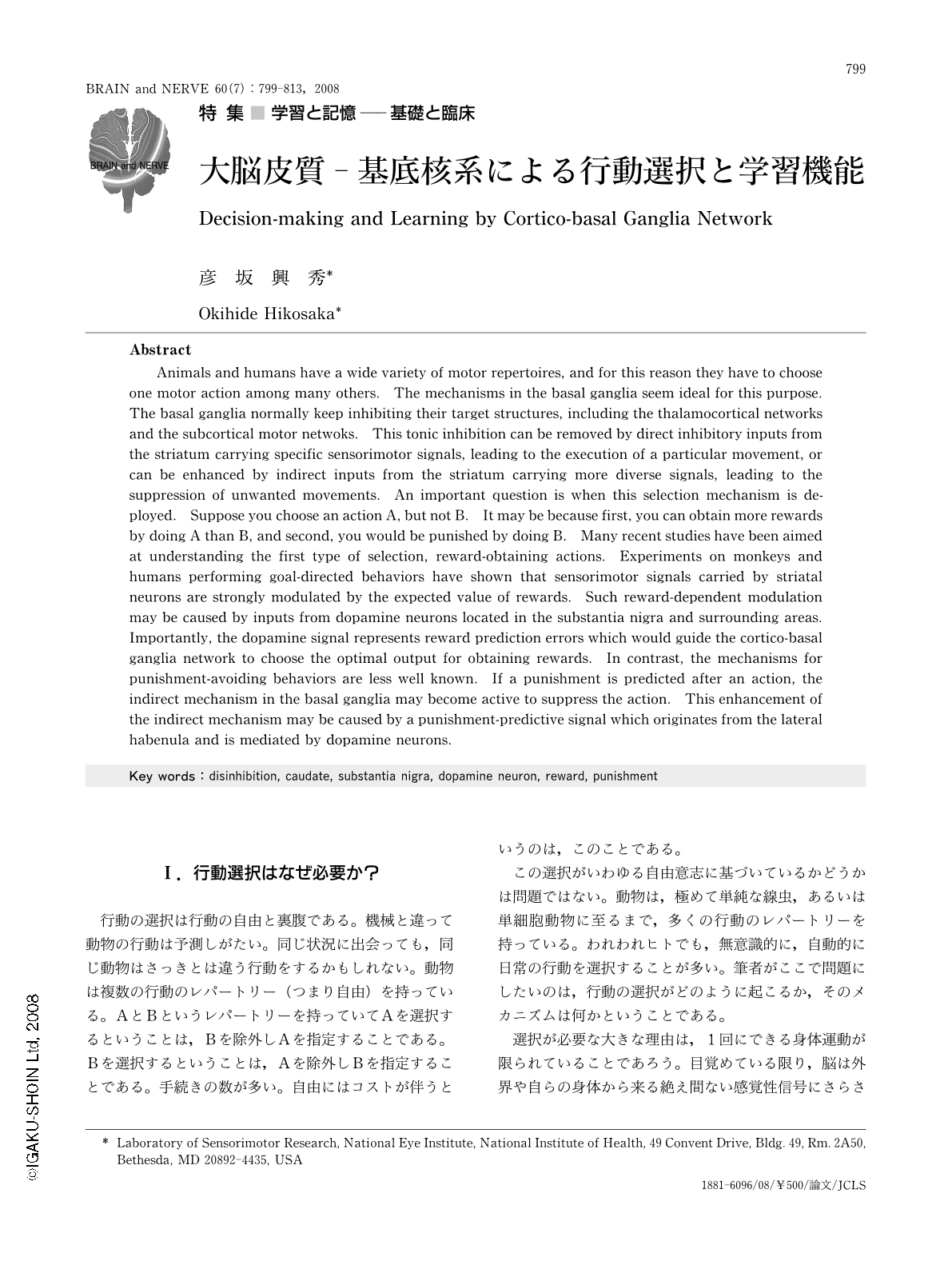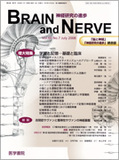Japanese
English
- 有料閲覧
- Abstract 文献概要
- 1ページ目 Look Inside
- 参考文献 Reference
Ⅰ.行動選択はなぜ必要か?
行動の選択は行動の自由と裏腹である。機械と違って動物の行動は予測しがたい。同じ状況に出会っても,同じ動物はさっきとは違う行動をするかもしれない。動物は複数の行動のレパートリー(つまり自由)を持っている。AとBというレパートリーを持っていてAを選択するということは,Bを除外しAを指定することである。Bを選択するということは,Aを除外しBを指定することである。手続きの数が多い。自由にはコストが伴うというのは,このことである。
この選択がいわゆる自由意志に基づいているかどうかは問題ではない。動物は,極めて単純な線虫,あるいは単細胞動物に至るまで,多くの行動のレパートリーを持っている。われわれヒトでも,無意識的に,自動的に日常の行動を選択することが多い。筆者がここで問題にしたいのは,行動の選択がどのように起こるか,そのメカニズムは何かということである。
Abstract
Animals and humans have a wide variety of motor repertoires, and for this reason they have to choose one motor action among many others. The mechanisms in the basal ganglia seem ideal for this purpose. The basal ganglia normally keep inhibiting their target structures, including the thalamocortical networks and the subcortical motor netwoks. This tonic inhibition can be removed by direct inhibitory inputs from the striatum carrying specific sensorimotor signals, leading to the execution of a particular movement, or can be enhanced by indirect inputs from the striatum carrying more diverse signals, leading to the suppression of unwanted movements. An important question is when this selection mechanism is deployed. Suppose you choose an action A, but not B. It may be because first, you can obtain more rewards by doing A than B, and second, you would be punished by doing B. Many recent studies have been aimed at understanding the first type of selection, reward-obtaining actions. Experiments on monkeys and humans performing goal-directed behaviors have shown that sensorimotor signals carried by striatal neurons are strongly modulated by the expected value of rewards. Such reward-dependent modulation may be caused by inputs from dopamine neurons located in the substantia nigra and surrounding areas. Importantly, the dopamine signal represents reward prediction errors which would guide the cortico-basal ganglia network to choose the optimal output for obtaining rewards. In contrast, the mechanisms for punishment-avoiding behaviors are less well known. If a punishment is predicted after an action, the indirect mechanism in the basal ganglia may become active to suppress the action. This enhancement of the indirect mechanism may be caused by a punishment-predictive signal which originates from the lateral habenula and is mediated by dopamine neurons.

Copyright © 2008, Igaku-Shoin Ltd. All rights reserved.


